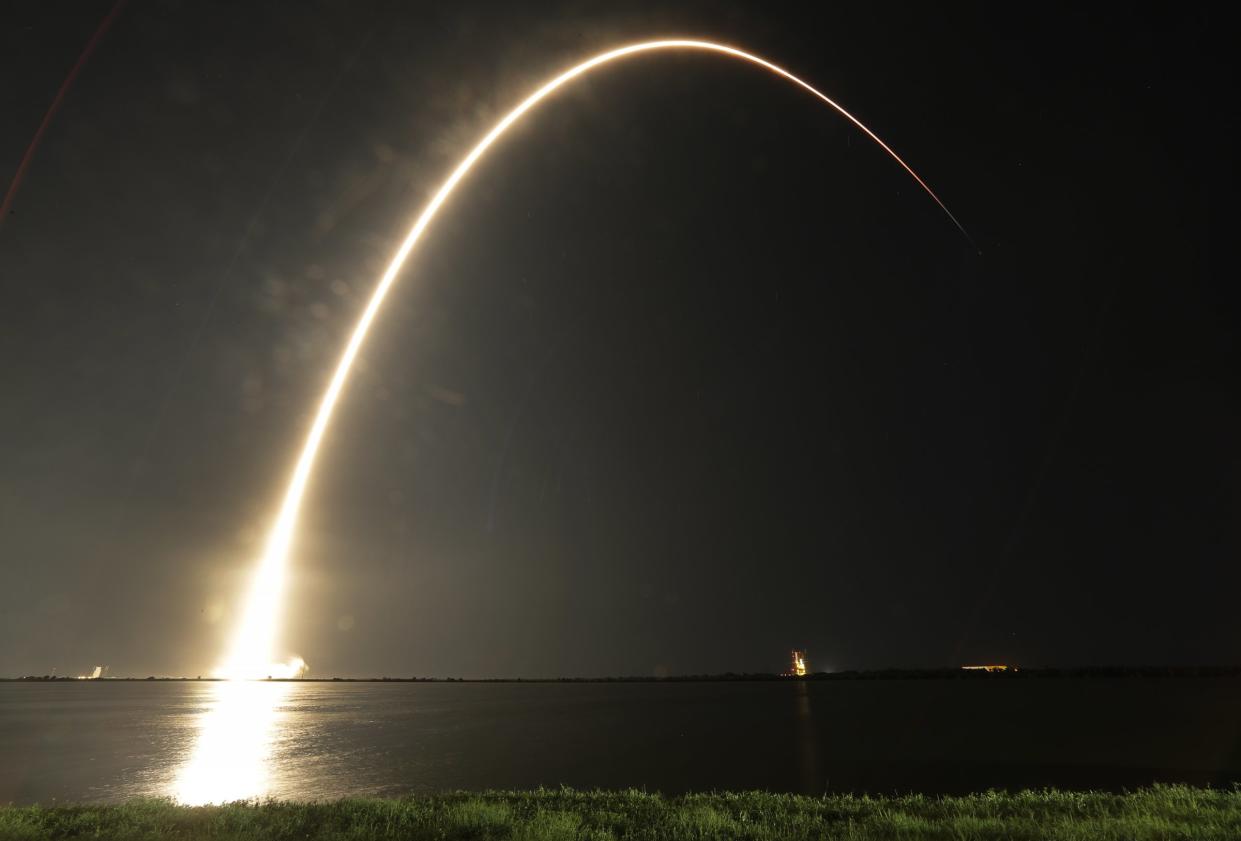The US Air Force is ordering new satellites to harden defenses against Russian and Chinese missile threats

John Raoux/AP
The US Air Force has awarded Lockheed Martin a nearly $3 billion contract for new missile early warning satellites.
The satellites — intended to be more survivable than their predecessors — support the critical US nuclear deterrence mission and serve as the first line of defense against threats from Russia and China, which are expanding their counterspace capabilities.
The US Air Force is ordering three new and survivable missile warning satellites, the service revealed Tuesday in an announcement stating that the contract had been awarded to Lockheed Martin for $2.9 billion.
The Geosynchronous Earth Orbit (GEO) satellites, part of the larger Next-Generation Overhead Persistent Infrared (Next Gen OPIR) constellation, are expected to bolster US early warning capabilities, as well as demonstrate greater survivability against present and emerging counterspace threats from US rivals and adversaries than existing systems, Defense News reported Wednesday.
"This is early warning to support our nuclear deterrence," Thomas Karako, a senior fellow with the International Security Program and the director of the Missile Defense Project at the Center for Strategic and International Studies, told Business Insider.
The Next Gen OPIR constellation is expected to replace the current Space Based Infrared System (SBIRS), with the first satellite launch now expected in 2023, two years earlier than initially planned. The initial procurement plans were first announced in April.
"As we develop these new systems, speed matters," Air Force Secretary Heather Wilson said in a statement, adding, "We are focused on providing a missile warning capability survivable in a contested environment by the mid-2020s." Discussions of survivability are reportedly focused on China and Russia, which are developing counterspace weapons, according to Military.com.
Lockheed will be "working closely with the Air Force on the rapid development of Next Gen OPIR’s more advanced, resilient missile warning capability," company spokesman Chip Eschenfelder said, Space News reported. We understand the need to 'go fast' while improving our national security posture against emerging threats around the world."
When it comes to protecting the US from missile threats, early warning satellites are the first line of defense.
"That infrared, that heat-detecting satellite is there to detect a missile’s plume, so it gives you that early warning of a big missile launch," Karako explained. "That is important from the national command perspective because in the event of a very bad day, the United States would have that warning and that time to kick our overall deterrence force into gear."
There are three main elements of the missile defense process — early warning, tracking, and discrimination. "Tracking and discrimination are what you have to do over and above early warning," Karako stressed, noting that early warning is still "critical."
After early warning systems have detected a launch, it is necessary to have a persistent track of the missile's location and speed. Knowing this is essential for interceptions "because if you want to send something in its way, you need to know exactly where to send it," Karako told BI.
Discrimination is then determining which of the many things floating around in space after the warhead separates is the intended target.
The new missile warning satellites are strictly focused on the early warning mission.
"There is going to be another constellation coming that is probably going to have a lot more satellites, and that’s for the tracking and discrimination challenge," Karako introduced, adding, "There's a lot of talk about a space sensor layer for missile defense. That is still forthcoming."
The Air Force currently operates 77 satellites serving in national security roles related to communication, command and control, missile warning, nuclear detonation detection, etc.
Gen. John Hyten, head of US Strategic Command, recently argued the need for a robust space-based sensor layer to bolster missile defense. "The most important thing to do in the missile defense business is make sure you can see and characterize the threat," he said at the Space and Missile Defense Symposium.
"If you can't see and characterize the threat, I don't care what kind of shooter you have, there is nothing you can do about it. We have to be able to see that threat," he added.
Lt. Gen. Samuel Greaves, director of the Missile Defense Agency, has also called for the development of an improved sensor architecture in space, citing the hypersonic missile threat. China tested a new hypersonic aircraft a little over a week ago that could be weaponized to slip conventional and nuclear payloads past existing defenses, and Russia is developing a hypersonic boost-glide vehicle for its intercontinental ballistic missiles.
The US Air Force awarded it second contract this year for a hyerpsonic weapon to Lockheed Martin Monday.
NOW WATCH: Here's what Beans from 'Even Stevens' is up to today
See Also:

 Yahoo News
Yahoo News 

